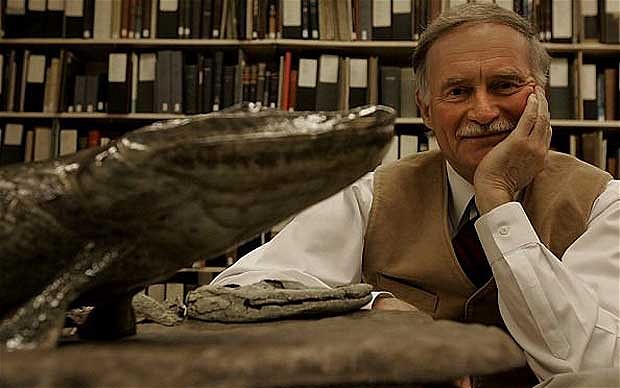Farish Jenkins, who has died aged 72, was a showman professor at Harvard whose teaching technique owed as much to Hollywood as to the halls of academe.
Although his disciplines were biology and zoology, Jenkins was never constrained by rigid scholastic boundaries and considered himself something of a hybrid. He made his name as a vertebrate paleontologist, combining field work in fossils with laboratory research on living creatures to help us understand how the earliest animals lived and moved. He made important discoveries about bird flight and respiratory physiology, as well as elucidating the evolutionary transition from reptiles to mammals .
His lectures had the feel of a performance, not least on account of his old-world charm and gentlemanly air. Particularly memorable were his celebrated “Moby Dick” anatomy lectures, in which Jenkins, strapping on a peg leg, would demonstrate the elements of human locomotion by declaiming passages from Melville’s novel while stumping around like Captain Ahab on the deck of the Pequod. His observations on gait showed students that a peg leg has no arch tendon to absorb shock.
Jenkins was also a talented artist, and would spend hours producing variously hued anatomical drawings on the blackboard for the next day’s lecture, even using a pencil sharpener on his chalk to execute the finer points of detail. Often he would make chalk marks on his dark bespoke suit to illustrate the bones of the body.
Away from the classroom, Jenkins’s work in the field took him to East Africa (where he was once charged by a black rhino), Greenland, Canada and the American West, often in extreme conditions. In the Canadian Arctic, he and his colleagues discovered Tiktaalik roseae, the 375-million-year-old fossil of a fishlike creature which they were sure represented the missing link between fish and four-legged animals on land.
Another major find was what Jenkins called the “ugliest animal in the world”, a 210-million-year-old armoured marine creature which opened its mouth by raising its upper jaw.
For these trips Jenkins would exchange his crisp, tailored shirt and immaculately knotted tie for a rabbit-fur hat, pocket-watch, flask of vodka and a high-powered rifle, an eccentric jumble of kit that caused his students to cast him as a real-life Indiana Jones. “In fact,” noted a colleague, “someone out in Montana who met him for the first time would have thought he was a cowboy or rancher rather than a Harvard professor.”
The eldest of three sons of a marketing executive, Farish Alston Jenkins Jr was born on May 19 1940 in New York City and grew up with his grandmother in Colorado while his father served in the Second World War.
After attending the Taft School at Watertown, Connecticut, Jenkins studied Geology at Princeton University, and from 1961 served nearly four years in the US Marine Corps, including spells in Japan and the Philippines, an experience that taught him to swear “without repeating myself” . After graduating from Yale, he worked at Columbia University before moving to Harvard in 1971.
Disdainful of academic bickering, he instinctively ignored official rebukes, such as those forthcoming when assorted furry creatures ran riot in his office, with results that reached, by his own admission, “circus-like” proportions. “Tree shrews ricocheted across my desk,” he once recalled.
More soberly, he created moving pictures from X-ray plates to give his students insights into how animals walk, trot, gallop, fly and (in the case of monkeys) swing through trees.
In a Harvard career spanning more than 40 years, Jenkins was variously professor of biology, Alexander Agassiz Professor of Zoology and curator of vertebrate palaeontology at the University’s Museum of Comparative Zoology.
His wife, Eleanor, whom he met while he was a student at Princeton, survives him with their son and daughter.
Farish Jenkins, born May 19 1940, died November 11 2012
Source: Article From The telegraph.



 April 9th, 2013
April 9th, 2013  Riffin
Riffin 
 Posted in
Posted in  Tags:
Tags: 